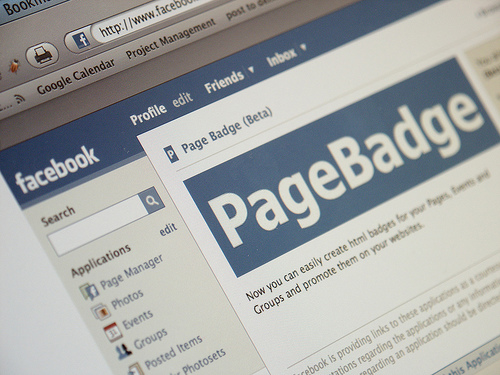How do you approach building a Facebook application?
After working with a few companies, I see three overarching approaches that can be taken. I hope the following suggestions help in brainstorming your Facebook application ideas:
First, an application can be designed that exposes a company’s content to an audience. In this case, the application directly correlates to the products or services being sold. The danger is that many of the companies desperate to promote to the Facebook demographic are having trouble penetrating because the nature of their offerings is boring (think financial companies, insurance, etc). As an example of an application relevant to a product line, imagine The Gap. They might offer an app showing the specific Gap items you own and/or you hope to buy (or be given as a gift). The problem with limiting one’s self to a product line tie-in is that you limit your ability to be viral and take advantage of popular trends. Such company-correlated applications have the benefit of gaining direct exposure for your business, but they can be limiting in terms of adoption. These apps are often the cheapest to build since you can simply harness already existing technology and infrastructure.
Second, a company could design an application with the goal of gaining as many users as quickly as possible. Such viral applications tend to see exponential growth, followed by a major drop. However, for a new company seeking exposure, this can be an excellent mechanism. Because the goal is users, a company may not even require any sort of product tie-in. A contest may augment such applications, especially if dealing with ‘time-sensitive advertising. An example of time-sensitive applications would be those used to promote a new movie or record release. Since the goal is to expose the movie name to as many people as possible, innovation and viralness are the key factors for success. Such apps span the cost scale. A truly innovative or funny app (with some viral features) can grow quickly on word of mouth alone and thus be quite cheap. A contest that gets tons of users hoping to win a trip to Fiji can be rather expensive.
Third are what I refer to as longevity applications. These are really the killer apps. The goal here is to create something that provides users with true value. I define true value as an application that someone is willing to keep and continue to use indefinitely going forward. The turnover rate (users who ultimately uninstall) tends to be lowest with these applications. And, while growth and number of installs may not be as great as with number two, over the long-term, a quality audience can be built and brand loyalty can be created. While the best longevity apps will at least hint at a company’s core competencies (think Where I’ve Been), others may have nothing to do with the company’s products (think the Rock, Paper, Scissors – Roshambul – app sponsored by Red Bull). Longevity applications are by far the most expensive apps to build because to retain users, the apps require innovative thinking, good designs and substantial marketing.

